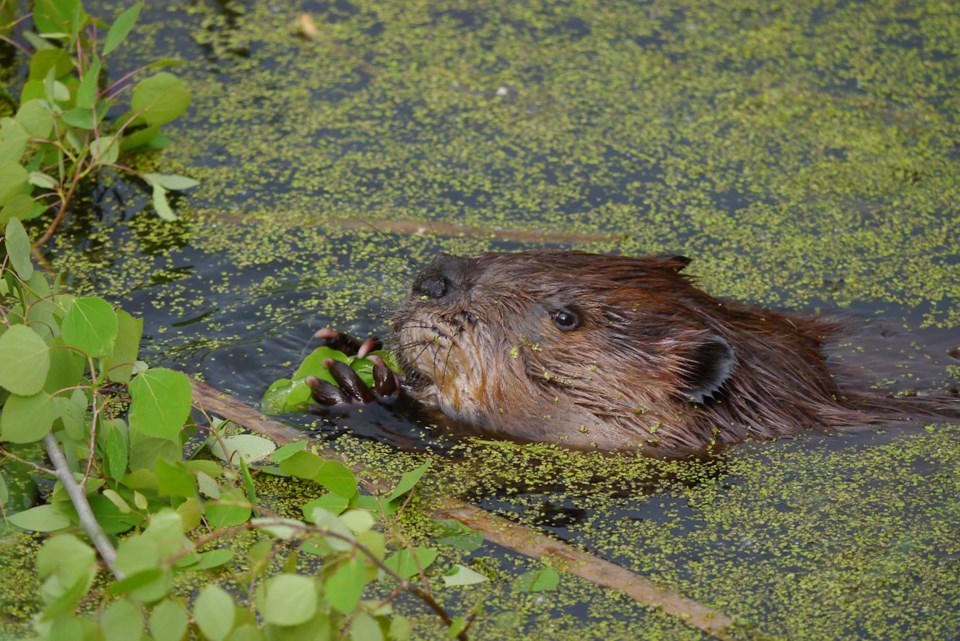Beavers can help St. Albert landowners stay wet during this year’s coming drought if we learn to live with them, say naturalists hosting an upcoming talk.
St. Albert and Sturgeon County are hosting a free online talk March 20 on living with beavers. The talk is the third and final part of the Wild About Wildlife series on human-wildlife conflicts.
Beavers are the world’s second largest rodents, coming second only to the capybara, reports Hinterland Who’s Who. They are famous, and infamous, for cutting down trees with their sharp teeth and assembling them into dams. An adult beaver will typically fell about 216 trees a year, which can be annoying if those trees happen to be in your yard.
Landowners might not like beavers because they cut down their favourite trees or flood their fields and homes, said Melissa Logan, environmental co-ordinator with the City of St. Albert. But beavers create space for regrowth through their wood-munching ways, and bolster groundwater recharge, water levels, and fish and bird habitat with their dams.
“In times of drought, beavers become more and more beneficial,” Logan said.
Drought busters
Cows and Fish riparian specialist Kerri O’Shaughnessy will speak about beavers and how to live with them as part of the March 20 talk.
Beavers are dog-sized furry brown mammals with big teeth, webbed back feet, and a paddle-like tail they slap against the water to warn others about danger, O’Shaughnessy said.
Logan said there are typically about 15 to 20 beavers living along the Sturgeon River in St. Albert at any one time, with many more upstream along Carrot Creek.
O’Shaughnessy said beavers chew trees to get food and to wear down their ever-growing teeth, which are orange in colour because of their iron content.
“The neat thing about beavers is that they are a keystone species,” she said, in that whole ecosystems depend on them.
Beaver dams slow water flow, which reduces the risk of floods downstream, O’Shaughnessy explained. Water trapped behind dams becomes a habitat for fish and plants, the latter of which can suck pollutants out of sediments trapped by the dam and improve water quality. Those plants also shade the water, cooling it and reducing losses to evaporation.
Beaver dams store water during drought, O’Shaughnessy said. One 2008 study by University of Alberta researchers found wetlands in Elk Island National Park that had beavers had nine times more open water than those that did not in both wet and dry years.
“A stream could run dry, but there could be water ponded in a beaver pond,” O’Shaughnessy said.
Instead of killing beavers, O’Shaughnessy encouraged landowners to learn to live with them. Wire cages can protect trees from beavers, and pond levellers (pipes stuck through dams) can reduce flooding.
Logan said St. Albert’s integrated pest management plan says to leave beavers alone unless they are damaging city infrastructure or putting public health at risk. Crews use both wire cages and pond leveller to address beaver impacts, and sometimes leave out branches as food in areas with many caged trees. Moving or killing beavers is generally used as a last resort.
The talk starts a 7 p.m. March 20, and will be archived on YouTube. Visit tinyurl.com/4m6w6m9v to register.




